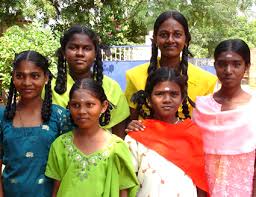Parents in Northern India favour
boys over girls when it comes to making sure that their children's heart
problems are corrected.This is happening even when treatment is provided completely free of charge,
reveals research published in the online journal Heart Asia.This gender bias is apparent for all ages of child and for parents living in
both rural and urban communities, suggesting deep-rooted attitudes towards the
societal value of girls, given that financial imperatives are often cited for
gender inequalities in India, say the researchers.
 They base their findings on 519 children with an inborn heart defect or
rheumatic heart disease who were referred between 2009 and 2014 to a specialist
cardiac centre in Northern India that provided treatment completely free of
charge under a government funded scheme.
Over the entire period, most of the referrals were for boys; on average, only
just over a third of the referrals (197, 37.6%) were for girls. A similar
pattern was evident for each of the years under study.Yet the reported prevalence of coronary heart disease in India is 2.25-5.2 per
1000 live births, with an almost equal gender ratio of between 1:1 and 1:1.25.
They base their findings on 519 children with an inborn heart defect or
rheumatic heart disease who were referred between 2009 and 2014 to a specialist
cardiac centre in Northern India that provided treatment completely free of
charge under a government funded scheme.
Over the entire period, most of the referrals were for boys; on average, only
just over a third of the referrals (197, 37.6%) were for girls. A similar
pattern was evident for each of the years under study.Yet the reported prevalence of coronary heart disease in India is 2.25-5.2 per
1000 live births, with an almost equal gender ratio of between 1:1 and 1:1.25.
 "Given the almost equal gender prevalence, it is alarming that relatively
fewer girls are brought to the tertiary centres and even fewer are having the
required corrective procedures done," write the researchers.
This is an observational study, so no firm conclusions can be drawn about the
causes of the gender disparity in the referrals made to the centre.
"Given the almost equal gender prevalence, it is alarming that relatively
fewer girls are brought to the tertiary centres and even fewer are having the
required corrective procedures done," write the researchers.
This is an observational study, so no firm conclusions can be drawn about the
causes of the gender disparity in the referrals made to the centre.
 Nevertheless, their findings prompt the authors to describe the current
differences in access as a "social evil." And they conclude:
"The deep-rooted social issues (beyond just the economic causes) need to
be addressed by medical professionals as well as policy makers to ensure equal
[access to] healthcare for both genders.
Nevertheless, their findings prompt the authors to describe the current
differences in access as a "social evil." And they conclude:
"The deep-rooted social issues (beyond just the economic causes) need to
be addressed by medical professionals as well as policy makers to ensure equal
[access to] healthcare for both genders.
- Blogger Comment
- Facebook Comment
Subscribe to:
Post Comments
(
Atom
)
0 comments:
Post a Comment
Please insert your comments here